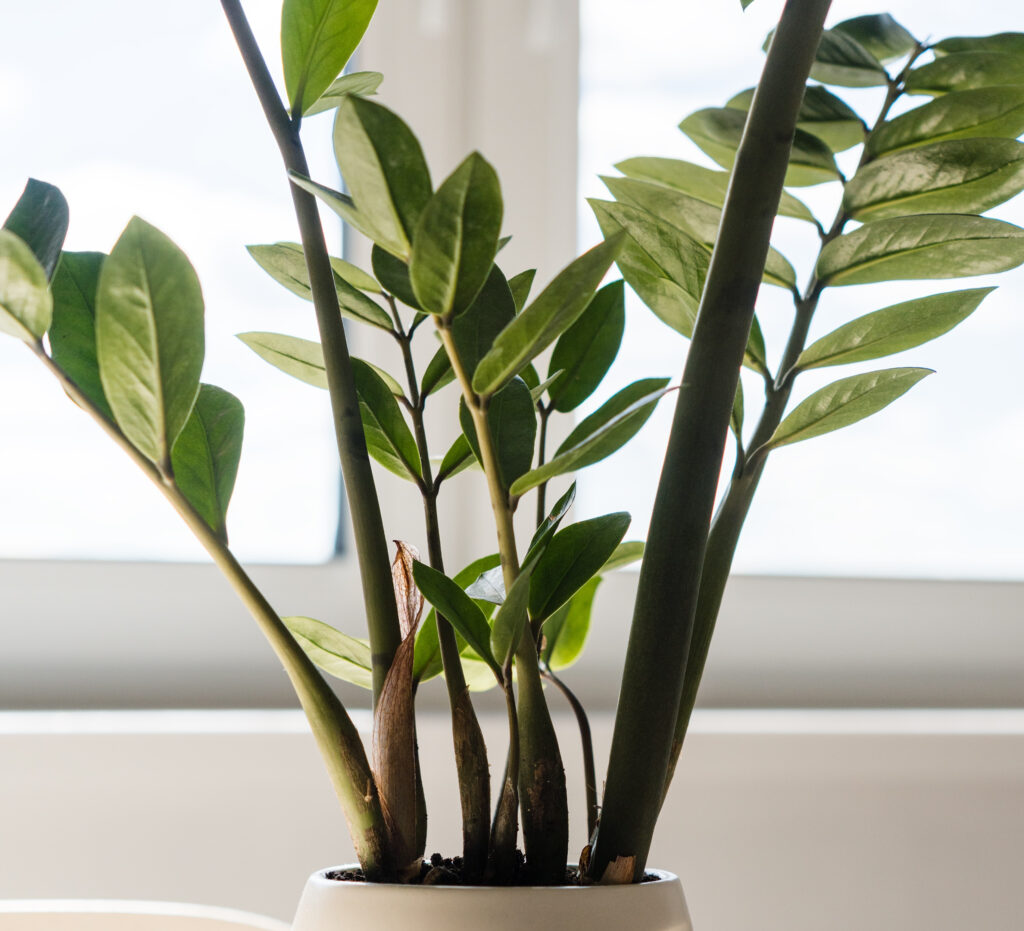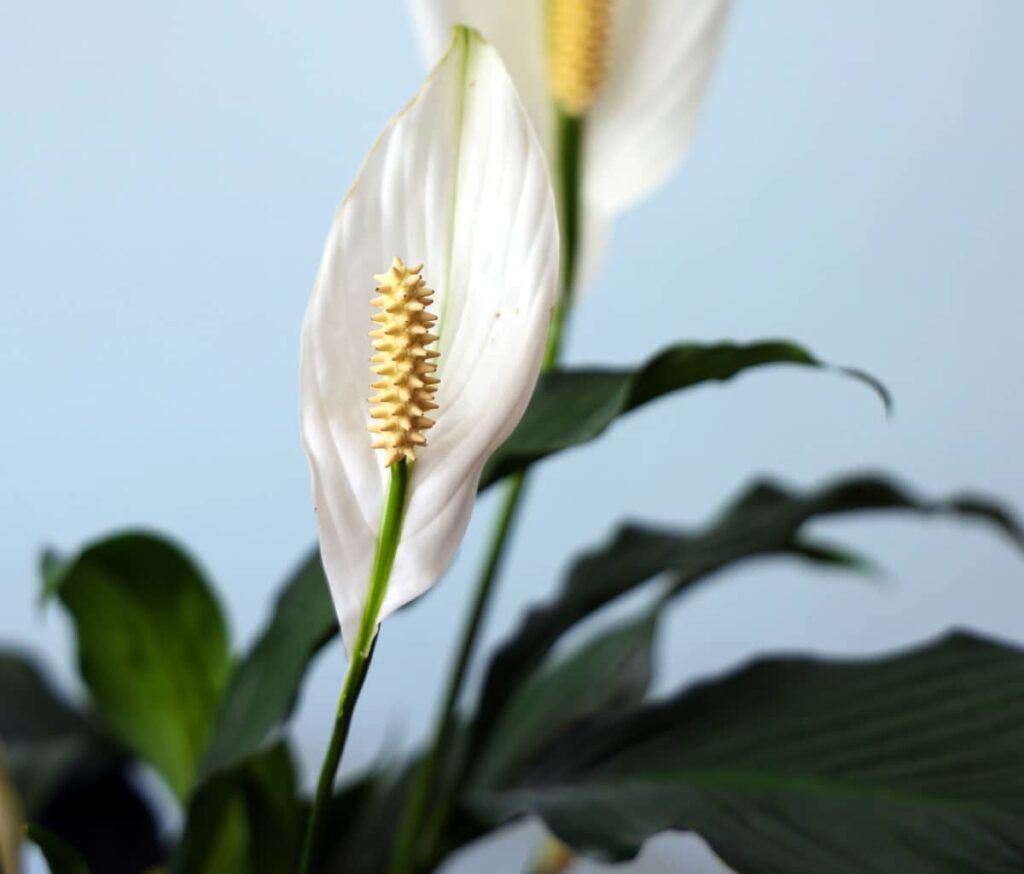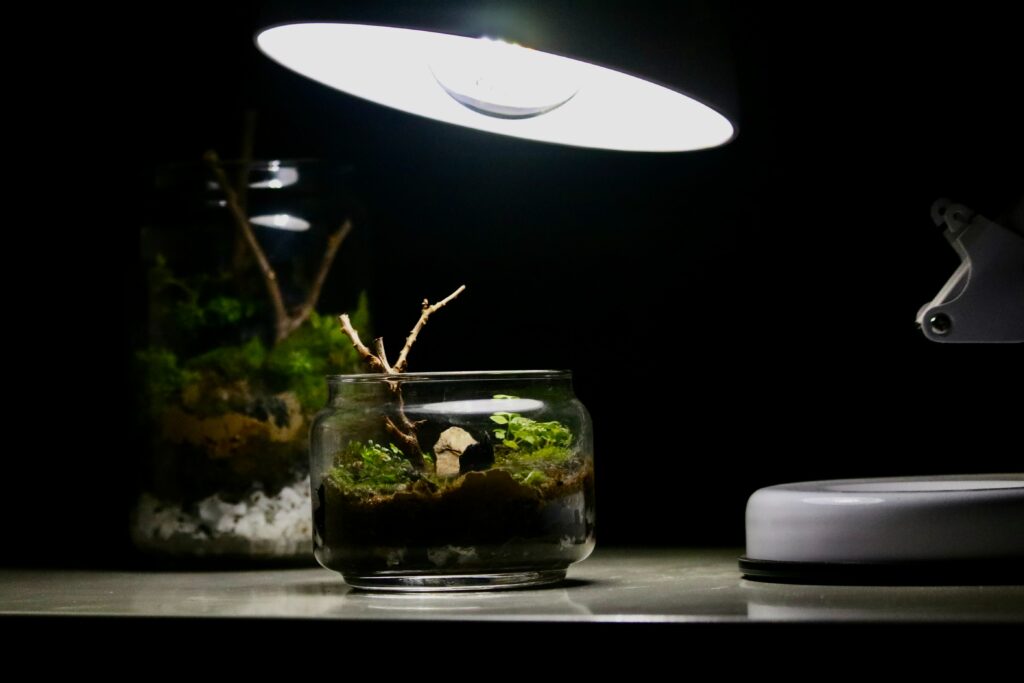Plants are a fascinating way to add a pop of color and life to any space. However, not all plants are created equal, and some require more sunlight than others. If you’re looking to brighten up a dark corner in your home or office, it’s crucial to select plants that can thrive in low light environments. Our list of the best plants for very dark spaces is here to help!
Understanding low light environments is the key to selecting the best plants for these spaces. These areas receive very little natural light, such as rooms with small windows or those that face north. Additionally, artificial light sources, such as fluorescent bulbs, can be too weak or too strong for some plants, making it even more challenging to find the right fit.
In low light environments, plants must adapt to survive. They may grow more slowly, have smaller leaves, or even change their color to better absorb the available light. Some plants have even evolved to grow in the understory of forests, where they receive very little direct sunlight.
When selecting plants for low light environments, it’s essential to consider their natural habitat and how they have adapted to low light conditions. Some plants are better suited for these environments than others, and choosing the right plants can make all the difference in their growth and health. In the following sections, we’ll explore some of the best plants for very dark spaces and how to care for them.
Factors to Consider When Choosing Plants for Dark Spaces
When it comes to selecting plants for spaces with low light, there are a multitude of factors to consider to ensure that your plants flourish. Here are some of the most important factors to keep in mind:
Light Requirements
The first and most obvious factor to consider is the amount of light that your plant needs. While some plants can survive in very low light conditions, others require more light to grow and thrive. It’s important to choose plants that are well-suited to the amount of light available in your space, as this can greatly impact their growth and overall health.
Watering Needs
Another crucial factor to consider is the watering needs of your plants. Some plants require more frequent watering than others, and some may be more susceptible to root rot if they are overwatered. It’s important to choose plants that are well-suited to your watering habits and the conditions in your space, as this can greatly impact their ability to thrive.
Humidity
The level of humidity in your space can also greatly impact the health and growth of your plants. While some plants thrive in humid environments, others prefer drier conditions. It’s important to consider the humidity levels in your space and choose plants that are well-suited to those conditions, as this can greatly impact their overall health and growth.
Size
Finally, the size of your space and the size of the plants you are considering are important factors to consider. If you have a very small space, you may want to choose smaller plants that won’t take up too much room. On the other hand, if you have a larger space, you may want to choose larger plants that can fill the space more effectively. It’s important to consider the size of your space and the size of the plants you are considering, as this can greatly impact their overall appearance and ability to thrive.
By taking these factors into consideration when selecting plants for spaces with low light, you can ensure that your plants thrive and add beauty and life to your home or office.
Top 5 Plants for Low Light Environments
If you’re struggling with a dimly lit nook in your home or office, fear not! There are a plethora of plants that can flourish in low light environments. Here are the top 5 plants that can thrive in very dark spaces:
Snake Plant
This resilient plant, also known as mother-in-law’s tongue, can survive in almost any lighting condition. Its long, upright leaves come in a variety of colors and patterns, making it a fantastic decorative addition to any space.
ZZ Plant

Another low-maintenance plant that can survive in low light environments is the ZZ plant. Its glossy, dark green leaves grow in a graceful, arching pattern and it’s known for its air-purifying qualities, making it an excellent choice for offices or bedrooms. If you’re also looking for a ZZ with darker foliage, the rarer Raven ZZ Plant, with nearly all-black leaves is one of the most popular dark-leafed plants available today.
Pothos

This trailing plant can grow up to 10 feet long and has heart-shaped leaves that come in a variety of colors, from green to variegated yellow and white. It’s perfect for hanging baskets or for training up a trellis. Classics include the Golden Pothos with equally beautiful varieties like the Neon Pothos available for darker spaces that could also use a splash of color, or the pictured Silver Satin Pothos that includes beautiful milky patterns across its leaves.
Peace Lily

The peace lily is a popular houseplant that can thrive in low light environments. It has dark green leaves and produces beautiful white flowers that bloom throughout the year. It’s also known for its air-purifying qualities, making it a great choice for bedrooms or living rooms.
Chinese Evergreen

This low-maintenance plant can survive in low light environments and has dark green leaves with silver markings. It produces small, white flowers and is perfect for adding a touch of greenery to a dark corner or for placing on a desk or bookshelf.
No matter what your lighting situation is, there’s a plant out there that can thrive in it. These top 5 plants for very dark spaces are just a few examples of the many plants that can add a touch of greenery to your home or office.
How to Care for Plants in Dark Spaces

Caring for plants in dark spaces can be quite a challenge, but with the right approach, you can keep your green friends healthy and thriving. Here are some tips to help you care for plants in very dark spaces:
Choose the right plants
The first step to caring for plants in dark spaces is to choose the right plants. It’s important to look for plants that are known to thrive in low-light conditions, such as snake plants, ZZ plants, and pothos. These plants are adapted to survive in low-light environments and require less sunlight than other plants. So, make sure to choose wisely!
Water sparingly
Plants in dark spaces don’t need as much water as those in brighter areas. Overwatering can lead to root rot, which can be fatal for your plants. Therefore, it’s crucial to make sure to let the soil dry out between waterings and avoid leaving standing water in the pot. Remember, less is more!
Use a well-draining soil
Plants in dark spaces need a soil that drains well to prevent water from sitting in the pot. It’s essential to use a well-draining soil mix that allows excess water to drain away from the roots. This will help to keep your plants healthy and prevent them from drowning.
Provide humidity
Plants in dark spaces can benefit from a bit of extra humidity. You can increase humidity by misting your plants with water or placing a tray of water near the plant. This will help to keep the air around the plant moist and prevent the leaves from drying out. So, don’t forget to give your plants some extra love!
Rotate your plants
Even though your plants are in a dark space, they still need some light to survive. It’s crucial to rotate your plants every few weeks to ensure that all sides of the plant receive some light. This will help to prevent the plant from becoming lopsided or growing towards the light source. So, make sure to give your plants a good spin!
By following these tips, you can keep your plants healthy and thriving in even the darkest of spaces. Remember to choose the right plants, water sparingly, use a well-draining soil, provide humidity, and rotate your plants to ensure they get the light they need to survive. With a little bit of care and attention, your plants will flourish in their dark abode!
Tips for Maximizing Light in Dark Spaces

When it comes to cultivating plants in dimly lit areas, it’s essential to maximize the available light. Here are some tips to help you make the most of the light you have:
Choose the right plants
The key to success is selecting plants that are well-suited to low-light conditions. Look for plants that are labeled as “low-light” or “shade-tolerant” to ensure they can thrive in your dark space.
Use reflective surfaces
To increase the amount of available light, consider placing mirrors or other reflective surfaces near your plants. This will help to bounce light around the room and create a brighter environment.
Keep windows clean
If your dark space has a window, it’s important to keep it clean and free of obstructions. This will allow as much natural light in as possible, which is crucial for the health of your plants.
Use artificial light
If natural light is limited, you may need to supplement your plants’ needs with artificial light sources. LED grow lights are a popular option for indoor gardening and can be adjusted to provide the right spectrum of light for your plants.
Rotate your plants
Even in a dark space, some areas may receive more light than others. To ensure your plants are getting equal exposure to available light, it’s important to rotate them regularly.
By following these tips, you can help your plants thrive in even the darkest of spaces. With the right approach, you can create a healthy and vibrant indoor garden that will bring joy and beauty to your home.
Common Mistakes to Avoid When Growing Plants in Low Light

When it comes to the art of growing plants in low light, there are a few common mistakes that many people make. These mistakes can be detrimental to the health of your plants, and can even lead to their untimely demise. However, with a little bit of knowledge and care, you can avoid these pitfalls and ensure that your plants thrive in even the darkest of spaces.
One of the biggest mistakes that people make is overwatering their plants. This is especially true in low light conditions, where plants don’t need as much water as they would in brighter areas. Overwatering can lead to root rot and other issues that can harm your plants, so it’s important to be mindful of how much water you’re giving them.
Another mistake that people often make is not providing enough humidity. Many plants thrive in humid environments, and low light areas can often be dry. To combat this, consider using a humidifier or placing a tray of water near your plants to help increase the humidity. This can make a big difference in the health and vitality of your plants.
Choosing the wrong plants is also a common mistake. Some plants simply won’t survive in low light conditions, no matter how much care you give them. It’s important to do your research and choose plants that are known to thrive in low light, such as snake plants, pothos, and ZZ plants. This will give your plants the best chance of success.
Finally, neglecting your plants is a mistake that can be easily avoided. Just because your plants are in a low light area doesn’t mean they don’t need care. Make sure to check on them regularly, water them when needed, and provide them with the right amount of light and humidity. With a little bit of attention and care, your plants can thrive in even the darkest of spaces.
By avoiding these common mistakes and taking the time to care for your plants properly, you can enjoy the beauty of plants no matter where you live. So go ahead and embrace the challenge of growing plants in low light, and watch as your green thumb flourishes.
Conclusion: Bringing Life to Dark Spaces with the Right Plants

The possibility of bringing life to dark spaces is not a far-fetched idea, especially with the right plants. However, the challenge lies in finding plants that can thrive in low light conditions. Fortunately, there are many options available that can add a touch of greenery to even the darkest corners of your home or office.
When selecting plants for dark spaces, it’s important to consider their light requirements, as well as their ability to tolerate low light conditions. Some of the best plants for very dark spaces include snake plants, ZZ plants, pothos, and peace lilies. These plants have unique features that make them suitable for low light environments, such as their ability to photosynthesize with minimal light.
Not only do these plants add aesthetic appeal to your space, but they also offer numerous health benefits, such as improving air quality and reducing stress levels. With the right care and attention, these plants can thrive in even the darkest of spaces, bringing life and vitality to your environment.
So, if you’re looking to brighten up a dark corner of your home or office, consider adding one of these low light-loving plants to your space. With their resilience and beauty, they are sure to bring a touch of nature to even the most dimly lit areas.
Frequently Asked Questions
What are some plants that can survive in very dark spaces?
Some plants that can survive in very dark spaces include snake plants, ZZ plants, pothos, peace lilies, and ferns.
Do these plants require any special care?
While these plants can survive in low light conditions, they still require some care. Make sure to water them regularly, but not too much as they can be susceptible to root rot. Also, consider using a fertilizer specifically designed for low light plants to ensure they are getting the nutrients they need.
Can these plants be placed in a windowless room?
Yes, these plants can be placed in a windowless room as they do not require direct sunlight. However, it is important to note that they still need some light to survive, so consider using artificial light sources such as grow lights.
Are there any plants that should be avoided in very dark spaces?
Plants that require a lot of sunlight, such as succulents and cacti, should be avoided in very dark spaces as they will not survive. Additionally, plants that require a lot of humidity, such as orchids, may also struggle in low light conditions.

